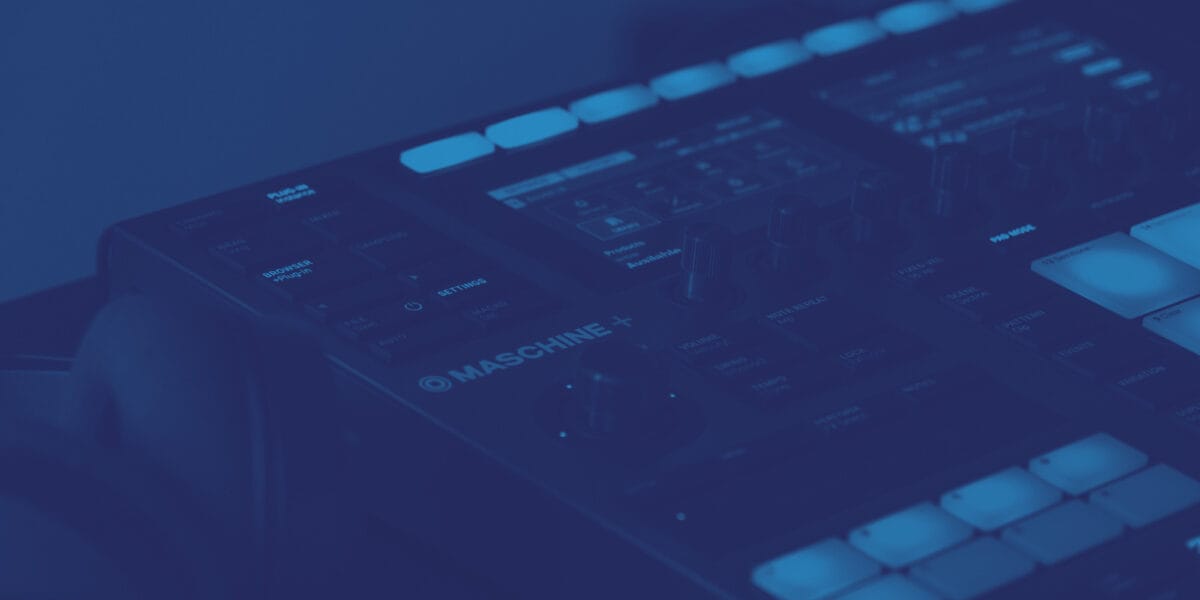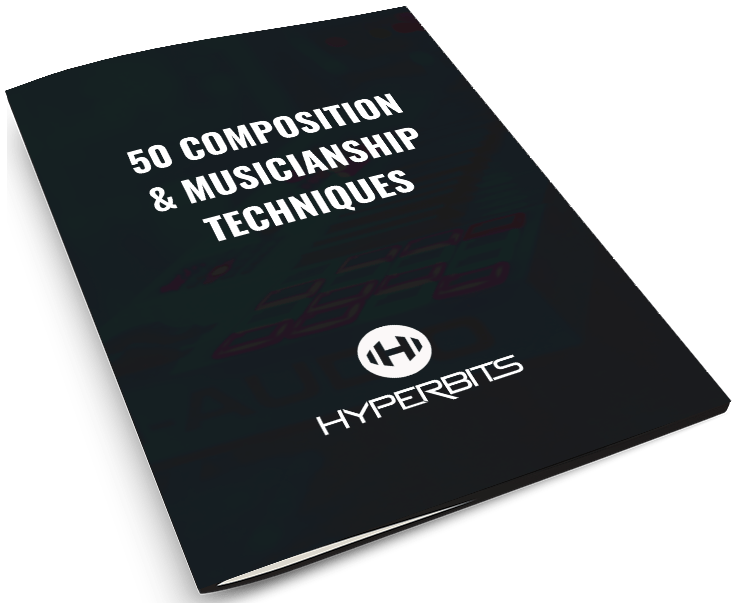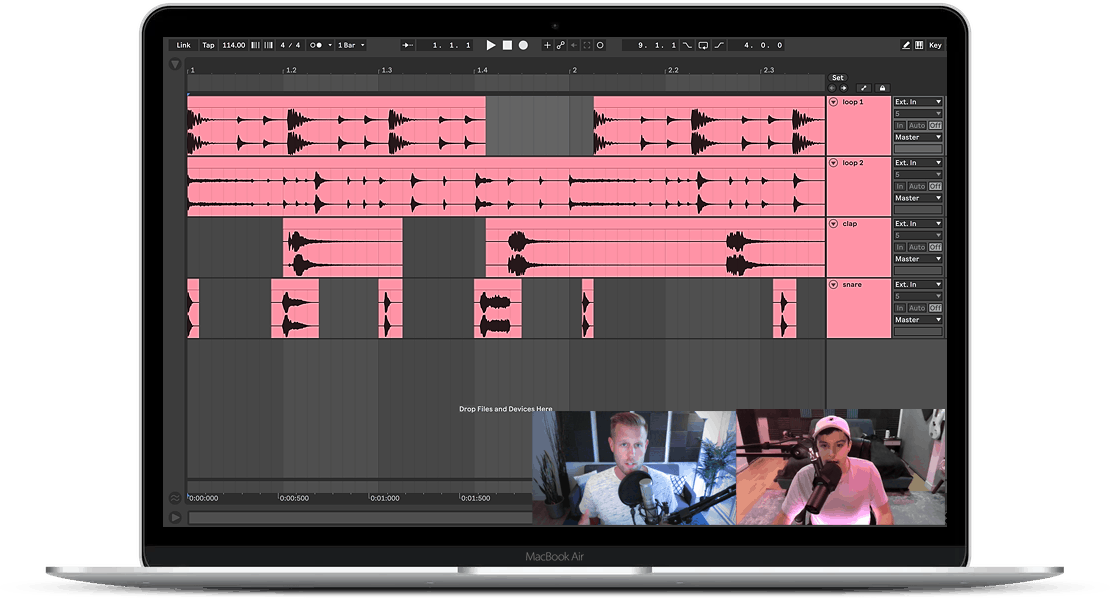How to Create a Perfect 808 Bass: A Complete Guide
“The bass is the link between harmony and rhythm. It is the foundation of a song. It is what all the other instruments stand upon, but it is rarely recognized as that.”
— Victor Wooten
If you’re into hip-hop and pop music, you’ve probably heard of the “808 bass” at some point. It’s generally characterized by a kick sound with a “THUMP” followed by a long sub-tail. Most people tend to sample this kick, but we’ll elevate you to another level.
In this article, you’ll learn how to make an awesome-sounding 808 bass. In addition, we’ll also cover what is NOT an 808 bass and how the history of this sound is ultimately what defines it.
Towards the end, we’ll cover how to make a ‘tasteful 808’ that could become your signature sound and how it’s ok to use sample packs in this area.
The History of the 808 Bass
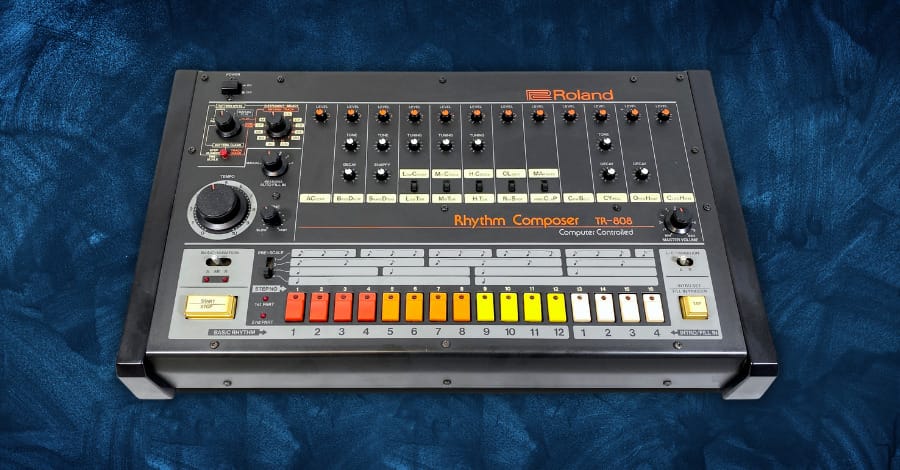
The term “808” refers to the iconic Roland TR-808 drum machine. Ikutaro Kakehashi made this vintage drum machine in 1980. Over time, this product grew in popularity to the point that it became a staple in pop and hip-hop.
This drum machine was so easy to adopt because it solved a major problem music producers in the 80s were struggling with; getting a perfect low-end. At the press of a button, this device would output a thick and juicy kick.
The TR-808 is best known for its kick drum, but it also contained sounds like snares, high hats, and more. What made the TR-808 stand out is how it didn’t sound like traditional percussion. The sounds it produced were described more as “futuristic” at the time.
Believe it or not, the TR-808 was initially a commercial failure. Roland stopped selling it only three years after launch. But what kept it alive is this machine began to develop something of a cult following. Eventually, artists used it on more hit records than any other drum machine.
What is NOT Considered an 808 Bass
How to Create an 808 Bass: Fundamentals
The fundamental component of an 808 bass is a sine wave. Any synth you have that can generate one will work. In the Hyperbits Masterclass, we teach our students to work in stock synths, Serum, and Omnisphere (to name a few).
But for simplicity, we will focus on making one in Serum by Xfer Records.
When picking your synth, make sure it has these key functions on the sound as a whole:
- Attack
- Decay
- Sustain
- Release
- Waveform Generators
- LFO
- Filter
When making your 808 sounds, it is also to keep in mind some key guiding principles:
- Create as much of the sound in the synth as much as possible. Don’t rely heavily on post-processing, as this will save CPU. You will also be able to save this as a preset later.
- Generally, keep your bass mono below 120 Hz for mono compatibility. Some FX widen your bass unintentionally, so keep this in mind.
- Don’t forget to experiment! This article will serve as your starting point but keep trying out new things.
How to Create an 808 Bass: Using Serum
Generating the Sound
The most common way to make an 808 is to use a sine wave. But here, we’re going to make one using a square wave. This approach gives us more harmonics right off the bat to play with.
First, open Serum and make sure you have the “init” patch open (this is the default for most people). Your patch should look like this:
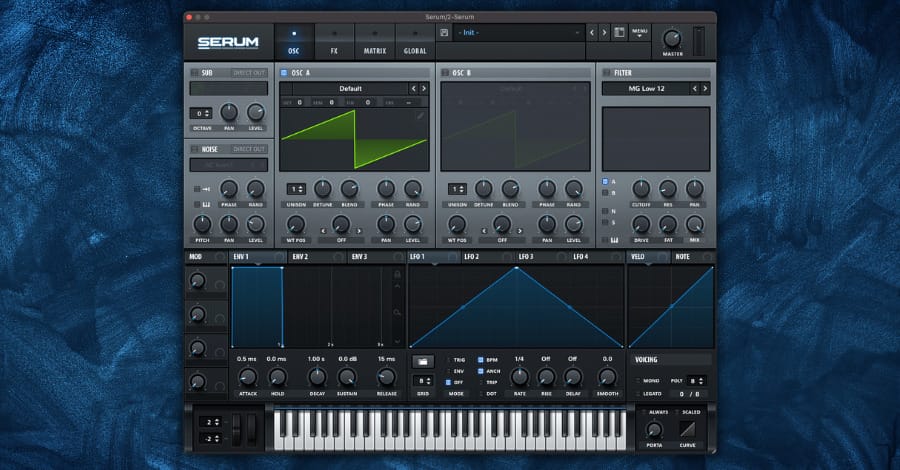
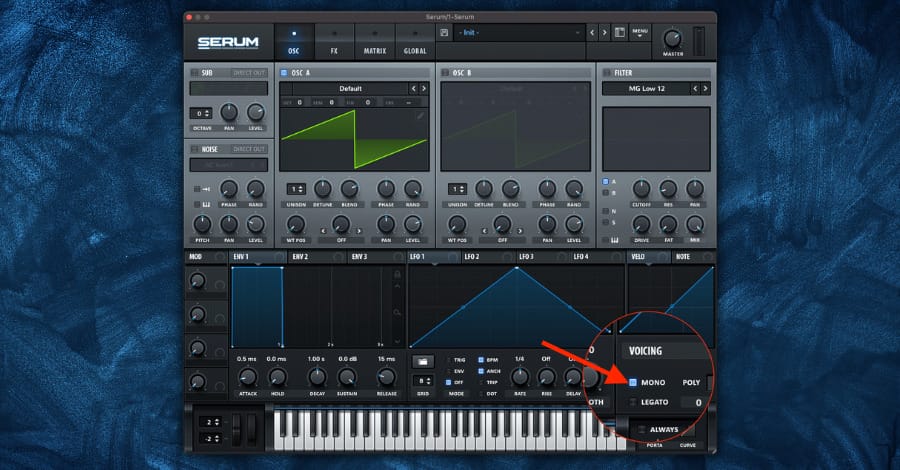
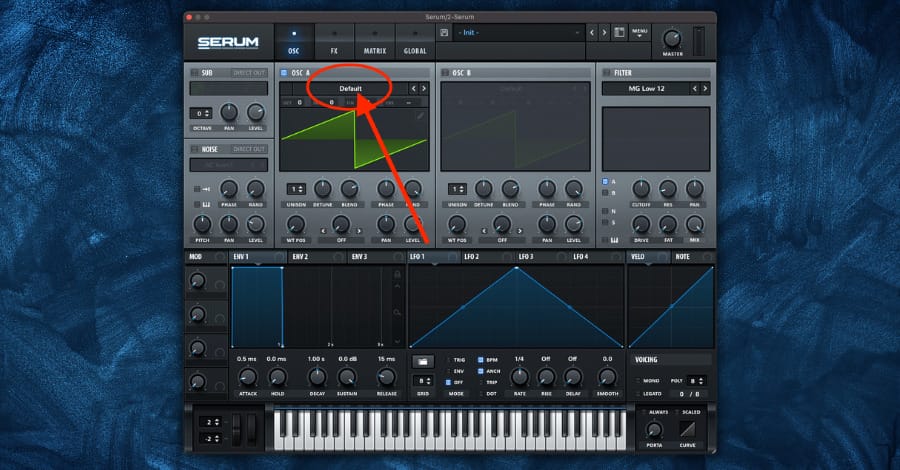
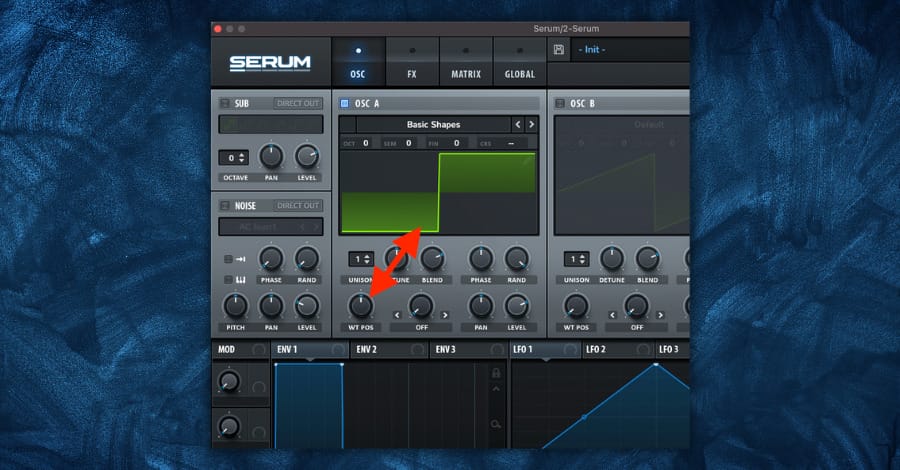
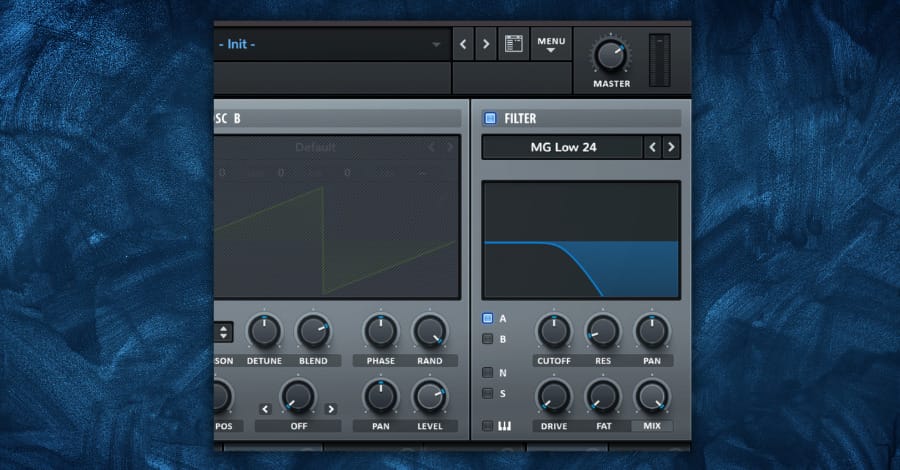
The THUMP
Now, we need to make the punch/thump of the 808. This is generated using an envelope to modulate the pitch.
Click on “ENV 2” and turn the ATTACK knob to the left (0.0 ms), turn the SUSTAIN knob to the left (0%), and turn the DECAY knob to about 143 ms
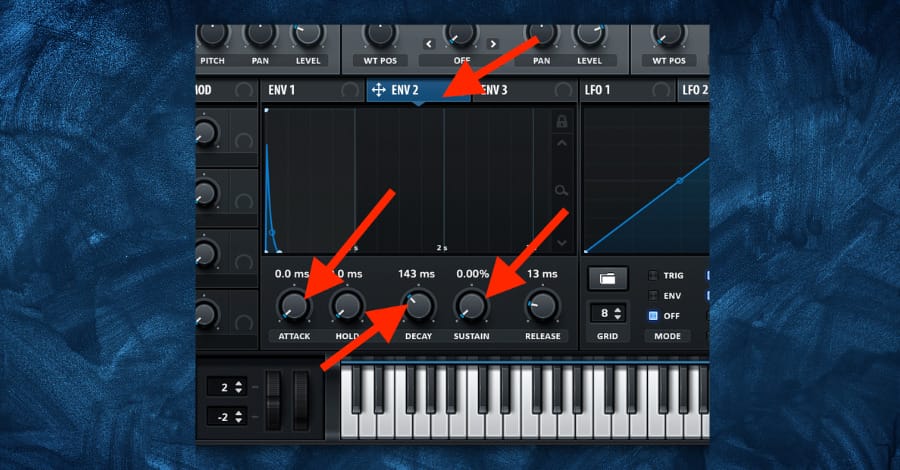
Now look to the top of the Serum window and click the large button that says “MATRIX.” On the first line, click the dashed lines under the column header that says “DESTINATION.” This will bring up a dropdown.
Under the dropdown, go to the “Global” category and click “Mast.Tun.” This will control the master tuning/pitch of the 808 sound.
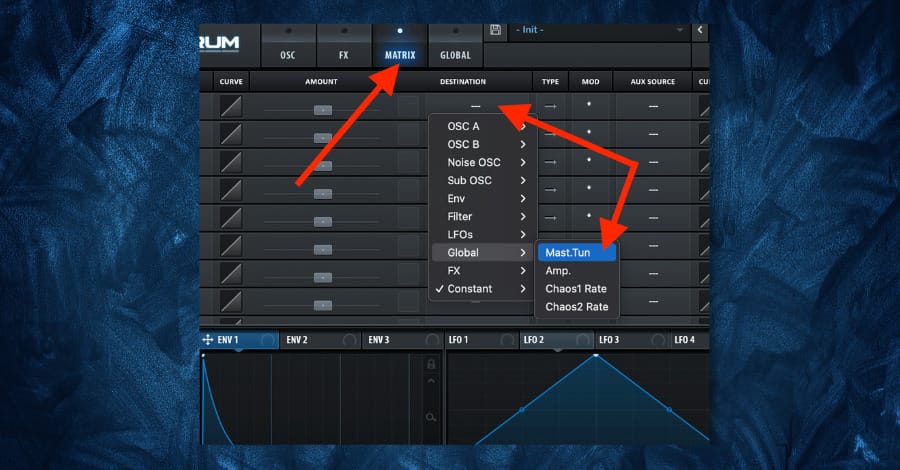
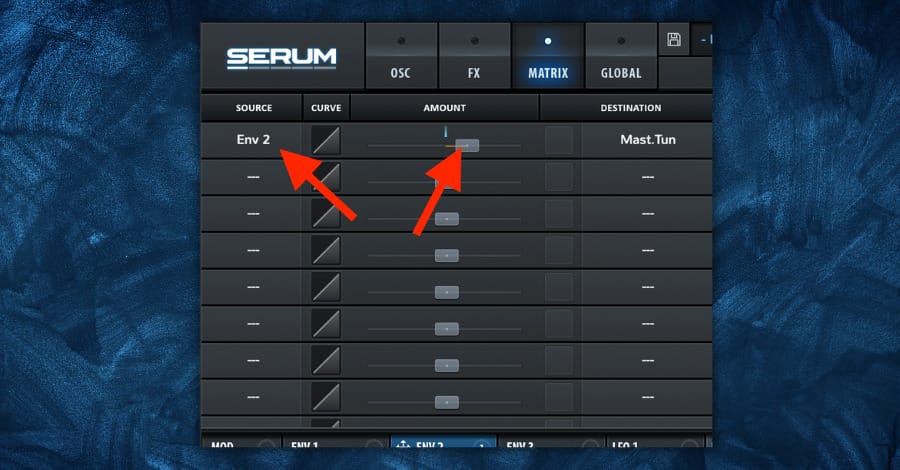
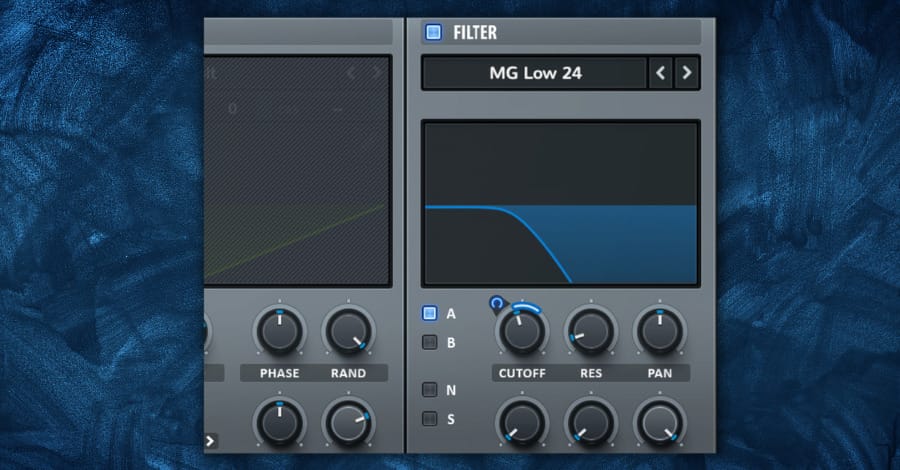
Play around with the ranges. This can let more high frequencies through and give your kick more attack.
You now have the punch of your 808 bass. I encourage you to play around with all of these parameters to learn how they work and to customize your sound to how you like it.
Decay/Sustain/Release
The last key part of the 808 bass is the decaying tail. This step is easy but requires a few extra things to keep in mind.
To start, click on “ENV 1.” This controls the overall shape of the sound coming from your patch. Set the “Release” to about 2.29s.
Lastly, adjust the DECAY knob to the left (0.0 ms).
NOTE: The time setting of your release will vary based on your song's BPM and style. Adjust this knob to taste accordingly.
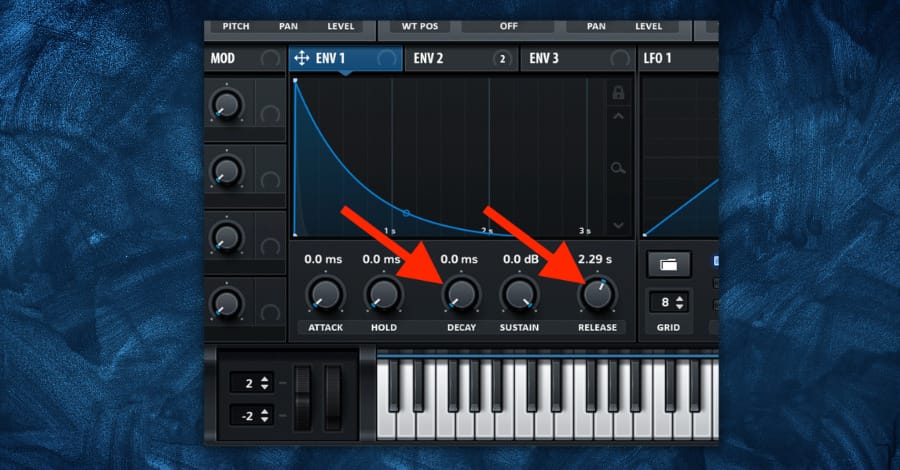
Now we have to journey into the midi notes of your DAW. Since the decay and release controls are set the way they are here in this patch, the length of your midi notes matters.
When you are programming your midi notes, keep them all the same length (ex. Quarter notes). Then, adjust the release knob in Serum to achieve the 808 bass length you want.
Keep in mind that the length of your midi notes controls the sustain of your 808.
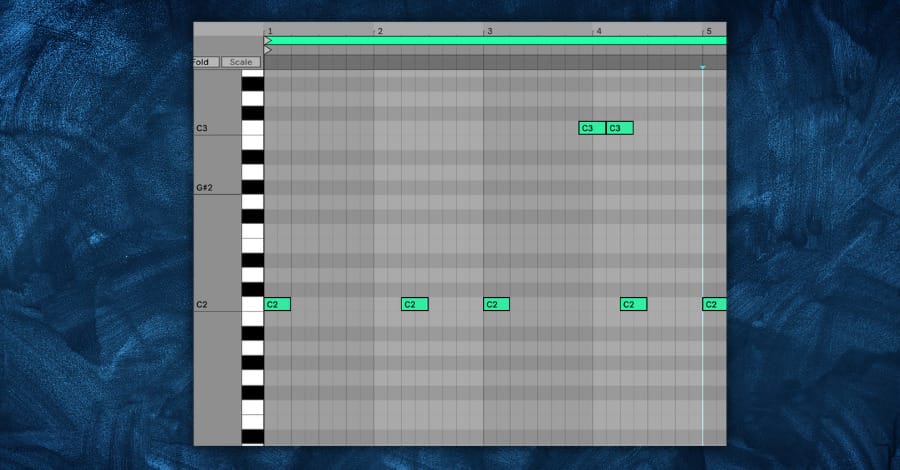
Adding Class to your 808 Bass
Adding Noise
If you ever want to give your 808 some top end or even a nice ‘sizzle’ to it, this is what you should reach for. It’s super easy too.
Turn on the noise generator in Serum. The kind of noise you use is up to you, but we can use the “AC hum 1” for now. Make sure the “DIRECT OUT” button is illuminated. Lastly, adjust the level of the noise.
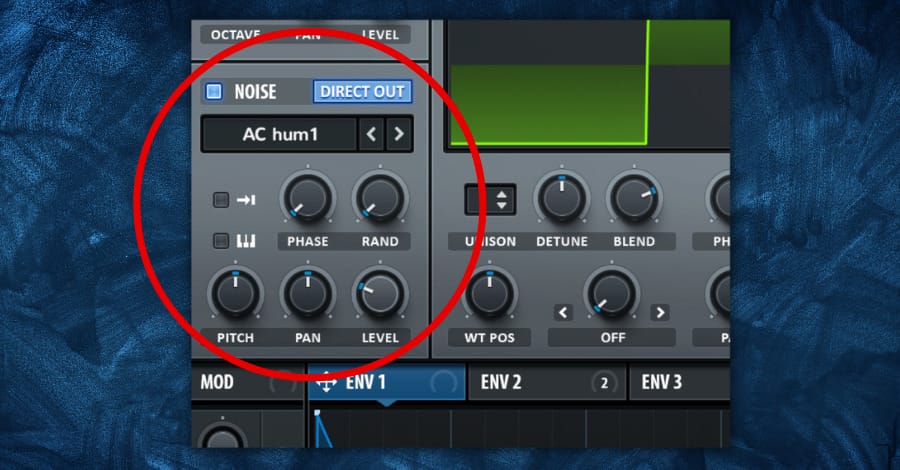
Distortion/Saturation
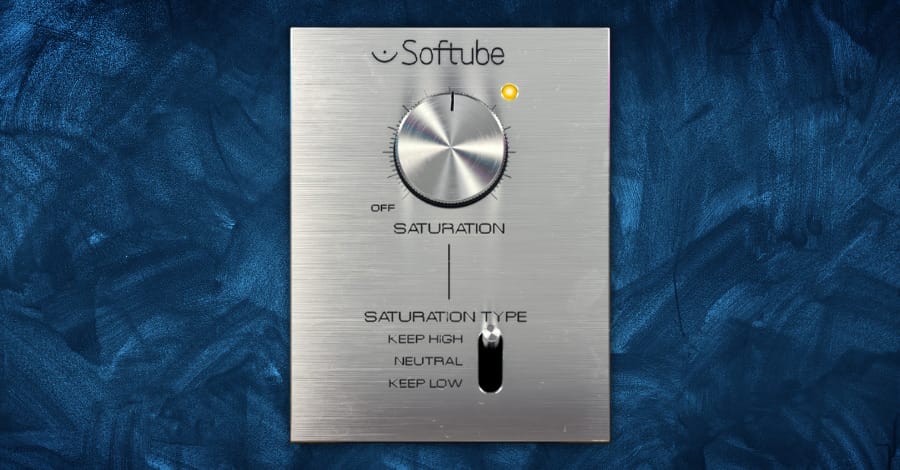
Layer a Kick Sample
Sometimes your 808 needs a little more punch. Rather than spend a lot of time trying to tweak the Serum patch, you can layer a punchy sample with it.
Using 808 Sample Packs and Presets
There are people on the internet that tend to shame people for using presets and sample packs. We’re here to put that to rest. It’s OK to use samples! Even when it comes to 808s.
Professionals use samples and presets. Why? Because pros care about creating great results. If that means using samples, then great!
Creating 808 bass sounds can be time-consuming. When inspiration is pumping through you, you don’t want to waste that platinum-quality creative energy tweaking knobs. Get that idea out ASAP!
Here are our top 3 favorite sample packs with 808 bass sounds in them:
- Cymatics Diamonds III - Hip Hop Sample Pack
- SURGE Sounds 808 Vol. 1
- LANDR Tape 808
What About Processing 808s Outside of a Synth?
At the end of the day, creating a perfect 808 sub-bass is a matter of personal preference and the style of music you are making. However, here are some general tips on how to create a powerful and impactful 808 sub-bass via processing chains outside of Serum or your chosen synth.
Get a great sample: The packs above will get you some great samples, but keep an eye out for a classic 808 sample from the Roland TR-808 drum machine. These are specifically known for their deep and punchy attitude, so using a sample of its original bass sound will ensure that your sub-bass has the right character from the get go.
Make sure to add distortion: Distortion can help to add warmth and character to your 808 sub-bass, making it sound more powerful and impactful. Experiment with different types of distortion and find the one that works best for your track. But generally speaking, I like to use Sound Toys Decapitator, hit the punish button (which adds 20 DB of distortion), and then tame the original sound by using the dry/wet knob.
Use EQ to sculpt the sound: EQ is a powerful tool for shaping the sound of your sub-bass. Use a low pass filter to remove any high-frequency content that is not necessary, and boost the frequencies around 60-80 Hz to make the bass sound more powerful. Make sure to do reductive EQ after saturation or distortion, otherwise, the frequencies you just cut might get added back in. Keep in mind, depending on the track, your 808 needs to be audible on all types of speakers — so test on your iPhone speaker to make sure you're keeping enough low mids, mid-range, and even hi-mids in order to cut through the mix.
Layer your 808 with a kick (don't forget to sidechain): Sidechain compression can be used to create a "pumping" effect in your sub-bass. This can help to make it stand out more in the mix and create a sense of movement and energy. Layering a kick into your 808 is a great way to get an aggressive transient that cuts through the mix. For this, I like to use LFO Tool, Kickstart 2 or Volume Shaper 4 because you are able to sidechain against the kick, and visually set your sidechain to perfectly respond to the initial kick. Make sure the low of your kick is not fighting for any space with your 808 basses. Also, keep in mind that the sidechain compression setting will be different based on the tempo and the genre of the music — so always adjust this according to the kick you are using and the style of track you are creating.
Add automation to make it dynamic: Automation can help to make your sub bass more dynamic and interesting. Experiment with automating the volume, the filter cutoff, or other parameters to create a sense of movement and interest over time. At the very least, use volume automation in a way that a real drummer would use. Keep things different, keep things moving, and your low end will be the opposite of dead, dull, flat and boring.
Remember that these are general tips, and the way you use them will depend on the style of music you are making and your personal preferences. It's important to experiment and find the sound that works best for you.
Final Thoughts
Congrats! You are now equipped with the knowledge to create your own 808 bass sounds.
Next, create your first 808 preset using what you learned here. Make sure to save it to your “favorites” folder and then experiment.
When you make an iteration of the 808 that you vibe with, save the patch. Keep doing this until you come up with a group of patches that you can reach for on your next track. Over time, keep tweaking your bass as you get better at producing. As your skills improve, so will your 808.
Good luck and happy beat-making!



